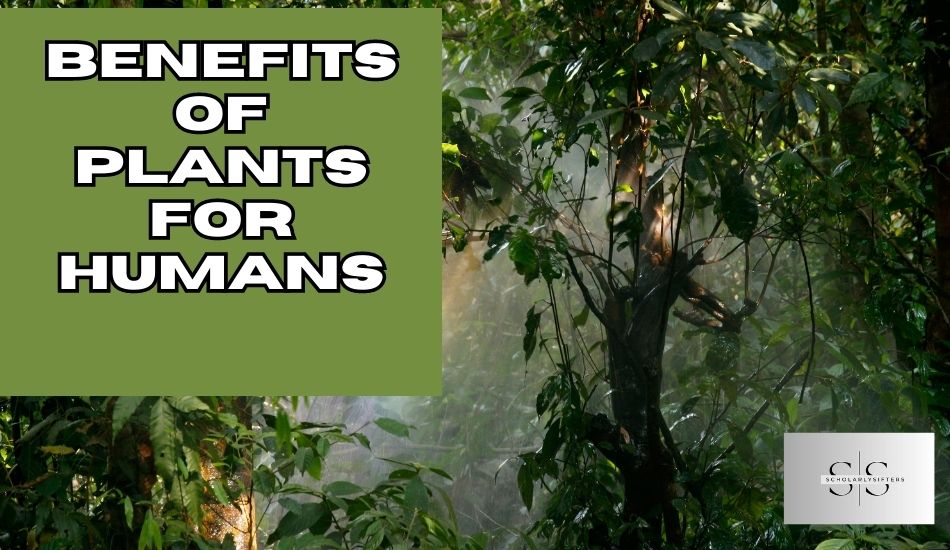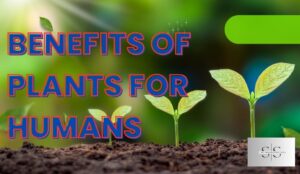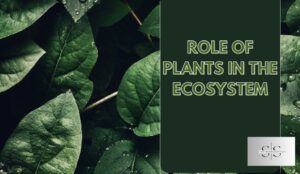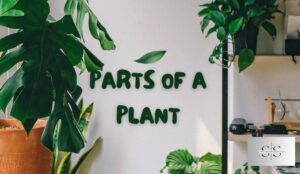No products in the cart.

Harvesting Nature’s Bounty: Unraveling the Multifaceted Benefits of Plants for Humans Well-Being and Prosperity
Introduction

Plants, the green guardians of our planet, play a profound role in sustaining life and fostering a healthy ecosystem. Beyond their aesthetic appeal, they offer a myriad of Benefits of Plants for Humans. In this article, we delve into the fascinating world of flora, exploring the invaluable advantages that plants bestow upon us.
Benefits of plants for humans: Importance of Plants
Plants are indispensable to all life forms, including humans. Their significance lies in the following key areas:
Oxygen Production:
One of the most fundamental Benefits of Plants for Humans are their ability to produce oxygen through the process of photosynthesis. By absorbing carbon dioxide from the atmosphere and releasing oxygen, plants create the very air we breathe, making them the primary source of life-sustaining oxygen on Earth.
Carbon Dioxide Absorption:
Plants act as a natural carbon sink, mitigating the impact of greenhouse gases by absorbing carbon dioxide from the atmosphere. This crucial role helps regulate global climate patterns and reduces the severity of climate change.
Food and Nutrition:
Plants are the foundation of our food chain, providing a diverse range of fruits, vegetables, grains, and nuts. Rich in essential nutrients, vitamins, and minerals, they form the basis of a balanced and healthy diet that supports our growth and well-being.
Medicinal Properties:
Throughout history, plants have been a treasure trove of medicinal compounds. Many modern medicines are derived from plants, offering remedies for various ailments and diseases. From pain relief to treating infections, plants continue to contribute significantly to pharmaceutical advancements.
Biodiversity and Ecosystem Balance:
Plants foster biodiversity by providing habitat and sustenance for countless animal species. They form the backbone of terrestrial ecosystems, promoting ecological balance and stability.
Soil Conservation:
Plant roots play a crucial role in preventing soil erosion. They anchor the soil, reducing the risk of landslides and maintaining the fertility of the land for agricultural purposes.
Aesthetic and Psychological Benefits:
The presence of plants in our surroundings enhances aesthetic appeal and contributes to a sense of well-being. Studies have shown that exposure to greenery and nature can reduce stress, anxiety, and depression, positively impacting our mental health.
Economic Importance:
The economic significance of plants cannot be understated. Industries like agriculture, horticulture, forestry, and landscaping rely heavily on plants, generating employment opportunities and contributing to the economy.
Sustainable Resource Management:
Plants offer renewable resources such as timber, paper, biofuels, and fibres. Sustainable management of these resources ensures their availability for future generations without depleting natural ecosystems.
Ecotourism and Recreational Opportunities:
Plants and their diverse habitats attract nature enthusiasts and tourists, fostering ecotourism and creating recreational opportunities. Appreciating the beauty of plants in their natural settings encourages conservation efforts.
Definition of Plants
Plants are multicellular, photosynthetic eukaryotic organisms that are members of the Plantae kingdom. They are a diverse group of living things, but what sets them apart from other species is their capacity for photosynthesis, which allows them to manufacture food.
Basic Characteristics of Plants
Multicellularity: Plants consist of multiple cells organized into tissues and organs, allowing them to perform specialized functions.
Eukaryotic Cells: Plant cells have a true nucleus and membrane-bound organelles, distinguishing them from prokaryotic cells.
Alternation of Generations: Plants exhibit a life cycle with alternating haploid (gametophyte) and diploid (sporophyte) generations.
Vascular Tissues: Most plants have vascular tissues (xylem and phloem) that transport water, nutrients, and sugars throughout the plant.
Benefits of Plants for Humans: Role of Plants in the Ecosystem

Benefits of Plants for Humans are the primary producers in terrestrial ecosystems, forming the foundation of food chains and webs. Their roles include:
Food Source: Herbivores feed directly on plants, while carnivores and omnivores depend on plant-eating animals for sustenance.
Oxygen Production: Photosynthesis by plants releases oxygen into the atmosphere, supporting the respiratory needs of various organisms.
Habitat and Shelter: Plants provide shelter and nesting sites for many animals, contributing to biodiversity and ecosystem stability.
Carbon Sequestration: Plants absorb carbon dioxide during photosynthesis, mitigating the impact of greenhouse gases on climate change.
Benefits of plants for humans: Parts of a Plant

Plants are complex organisms with distinct structures that enable them to perform various functions necessary for growth and survival.
Root System
The root system is located below the ground and serves as a crucial anchor for the plant. It performs essential functions that are vital for the plant’s well-being and development.
Shoot System
The shoot system comprises the above-ground parts of the plant and is responsible for various vital functions, including photosynthesis and reproduction.
Stem
The stem is an important component of a plant’s anatomy since it provides the primary structural support and a pathway for several crucial processes. It is crucial in tying the plant’s roots and leaves together and enabling the movement of water, nutrients, and carbohydrates all throughout the plant.
Leaves
One of a plant’s most recognisable and important elements are its leaves. They serve as the main locations for photosynthesis, a process that turns light energy into chemical energy and subsequently creates food for the plant.
Growth and Development
Vegetative Growth
During vegetative growth, the plant focuses on developing roots, stems, and leaves. The primary objective is to establish a robust structure to maximize nutrient absorption and photosynthesis.
Reproductive Growth
Once the plant has reached sufficient maturity, it transitions into reproductive growth. This phase involves the formation of flowers, which are essential for sexual reproduction.
Flowering and Pollination
Flowers are the reproductive structures of angiosperms (flowering plants) and consist of several parts:
- Sepals: Leaf-like structures that protect the developing flower bud.
- Petals: Colorful and attractive parts that help in attracting pollinators.
- Stamens: Male reproductive organs comprising the anther (pollen-producing structure) and filament (stalk).
- Pistil (Carpel): The female reproductive organ, comprising the stigma (receives pollen), style (connects stigma to ovary), and ovary (contains ovules).
Pollination Methods
Pollination is the transfer of pollen from the male stamen to the female stigma, enabling fertilization.
There are various pollination methods:
- Wind Pollination: Pollen is carried by the wind to reach female flowers. Examples include grasses and some trees like pine and oak.
- Insect Pollination: Insects, like bees, butterflies, and beetles, transfer pollen while foraging for nectar.
- Animal Pollination: Birds and mammals, such as hummingbirds and bats, aid in pollination while feeding on nectar.
- Self-Pollination: Some plants can pollinate themselves, ensuring successful fertilization even without external agents.
Plant Reproduction
Plant reproduction refers to the biological process through which plants produce offspring or new individuals. Unlike animals, plants are sessile organisms, meaning they cannot move from one place to another. Plant reproduction can occur through asexual or sexual.
Asexual Reproduction
Asexual reproduction is a mode of reproduction in which an organism produces offspring without the involvement of gametes (sperm and egg cells) or the fusion of genetic material from two parents
Sexual Reproduction
The process of sexual reproduction involves the contribution of genetic material (gametes) from two people, usually of different sexes, to create offspring that combine the genetic characteristics of both parents.
Process of Pollination
Pollination is the first step in sexual reproduction and involves the transfer of pollen from the male part (anther) to the female part (stigma) of the flower.
Fertilization and Seed Formation
After pollination, fertilization takes place when the pollen nucleus fuses with the ovule’s nucleus in the ovary. This process forms a zygote, which develops into an embryo. The ovary then matures into a fruit, enclosing seeds that carry the new plant’s genetic information.
Plant Adaptations
Plants have evolved a diverse array of adaptations to survive and thrive in different environments. These adaptations enable them to cope with various challenges and take advantage of available resources.
Desert Plants
Desert plants face arid conditions, extreme temperatures, and limited water availability. To survive in such harsh environments.
Aquatic Plants
Aquatic plants thrive in water bodies and face challenges related to buoyancy, water movement, and nutrient availability.
Mountain Plants
Mountain plants encounter harsh conditions such as low temperatures, high altitudes, and strong winds.
Benefits of Plants for Humans
Benefits of Plants for Humans play a crucial role in supporting human life and well-being in various essential ways. From providing sustenance to serving as a source of medicine and contributing to a healthy environment, their importance cannot be overstated.
Food Production
Food production refers to the process of growing, raising, harvesting, processing, and distributing food to meet the nutritional needs of the global population.
Agriculture and Farming
Agriculture and farming are the processes by which humans cultivate plants to meet the demands of a growing population. This practice involves the cultivation of crops, raising livestock, and managing natural resources to ensure a sustainable and reliable food supply.
Traditional and Modern Uses
Traditional herbal medicine systems in different cultures have relied heavily on medicinal plants for treating various ailments. In modern medicine, plant-derived compounds continue to be valuable sources of pharmaceutical drugs and treatments for diseases such as cancer, malaria, and heart conditions.
Oxygen Production and Carbon Dioxide Absorption
Photosynthesis is the process by which plants convert carbon dioxide and water into glucose (a form of sugar) and oxygen, using sunlight and chlorophyll. This vital process occurs in plant leaves and provides oxygen to the atmosphere.
Impact on the Atmosphere
Plants are primary contributors to the oxygen content in the atmosphere, making them crucial for supporting all aerobic life forms, including humans.
Fun Facts About Plants
Plants are not only essential for our survival but also showcase fascinating and extraordinary traits.
Here are some fun facts about plants that highlight their diversity and uniqueness:
Largest Plant: The largest known plant on Earth is the Giant Seagrass (Posidonia australis). It forms vast underwater meadows off the coast of Western Australia, covering an area of about 200 square kilometers.
Smallest Plant: The smallest known plant is a type of algae called phytoplankton. These microscopic organisms drift in oceans and freshwater bodies, providing the foundation of marine food chains.
Oldest Tree: Methuselah, a Great Basin Bristlecone Pine (Pinus longaeva) found in California’s White Mountains, holds the record for being one of the oldest living trees. It is estimated to be over 4,800 years old.
Oldest Plant Fossil: The oldest plant fossil discovered so far is a simple green alga known as Proterocladus antiquus. It dates back approximately 1.047 billion years.

Conclusion
In conclusion, plants are not only the green guardians of our planet but also vital allies in sustaining life and fostering a healthy ecosystem. Their significance in various aspects of human existence cannot be overstated. The Benefits of Plants for Humans are numerous and diverse. They are the source of our sustenance, offering a wide range of nutritious fruits, vegetables, grains, and nuts. Additionally, plants hold medicinal properties, providing remedies for various ailments and contributing to pharmaceutical advancements.






